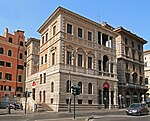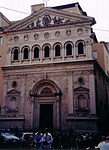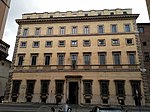Università telematica internazionale Uninettuno
2005 establishments in ItalyAC with 0 elementsDistance education institutions based in ItalyEducational institutions established in 2005Private universities and colleges in Italy ... and 1 more
Universities and colleges in Rome
The UniNettuno University (Italian: Università telematica internazionale UniNettuno), often simply abbreviated as "UniNettuno" is a private university based in Rome, Italy which provides distance e-learning courses via a consortium of 43 universities, companies, and public bodies. It was founded in 2005 with the approval of the Italian government.
Excerpt from the Wikipedia article Università telematica internazionale Uninettuno (License: CC BY-SA 3.0, Authors).Università telematica internazionale Uninettuno
Largo delle Stimmate, Rome Municipio Roma I
Geographical coordinates (GPS) Address Nearby Places Show on map
Geographical coordinates (GPS)
| Latitude | Longitude |
|---|---|
| N 41.8962 ° | E 12.4775 ° |
Address
Santissime Stimmate di San Francesco
Largo delle Stimmate
00186 Rome, Municipio Roma I
Lazio, Italy
Open on Google Maps











